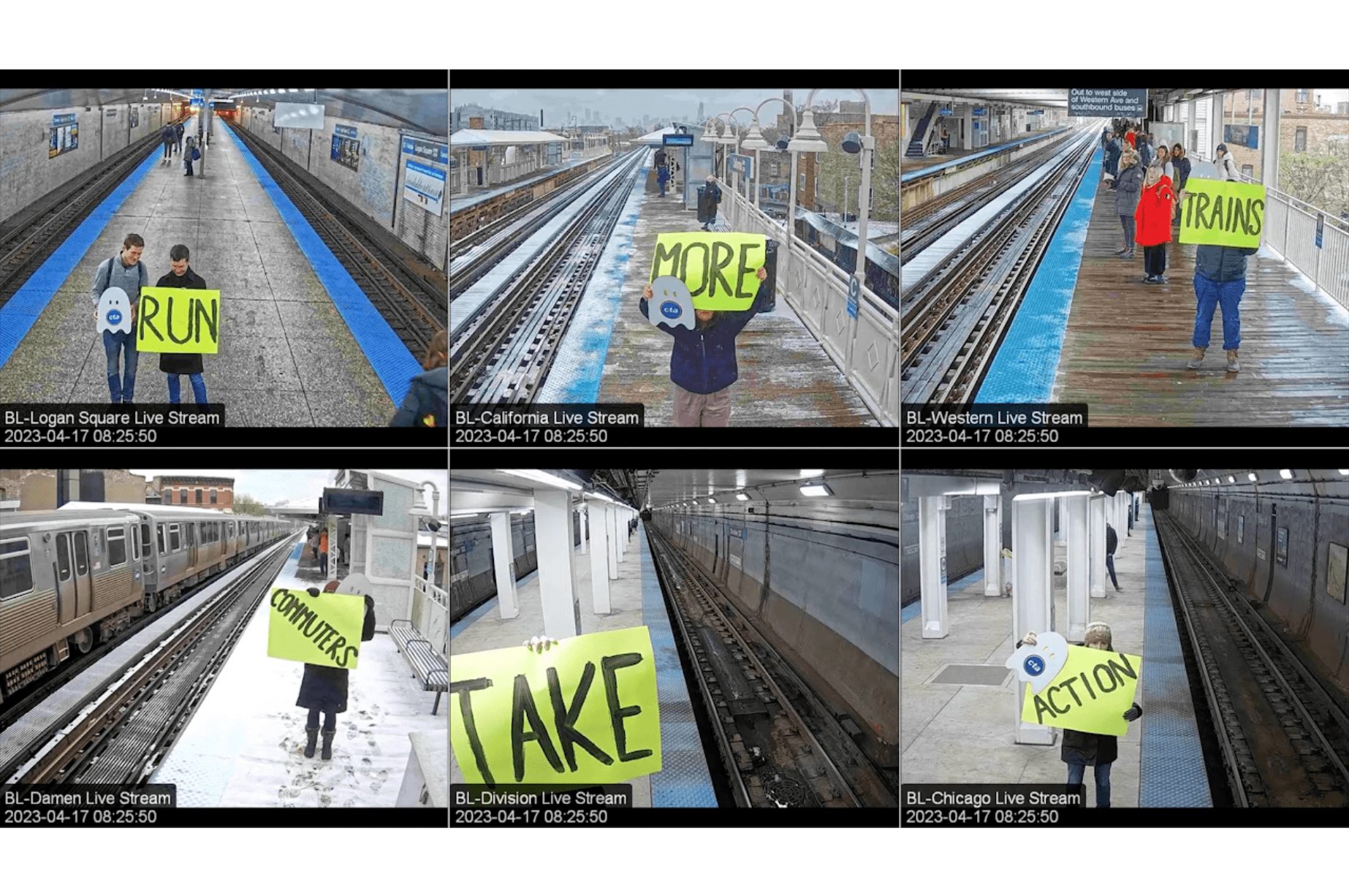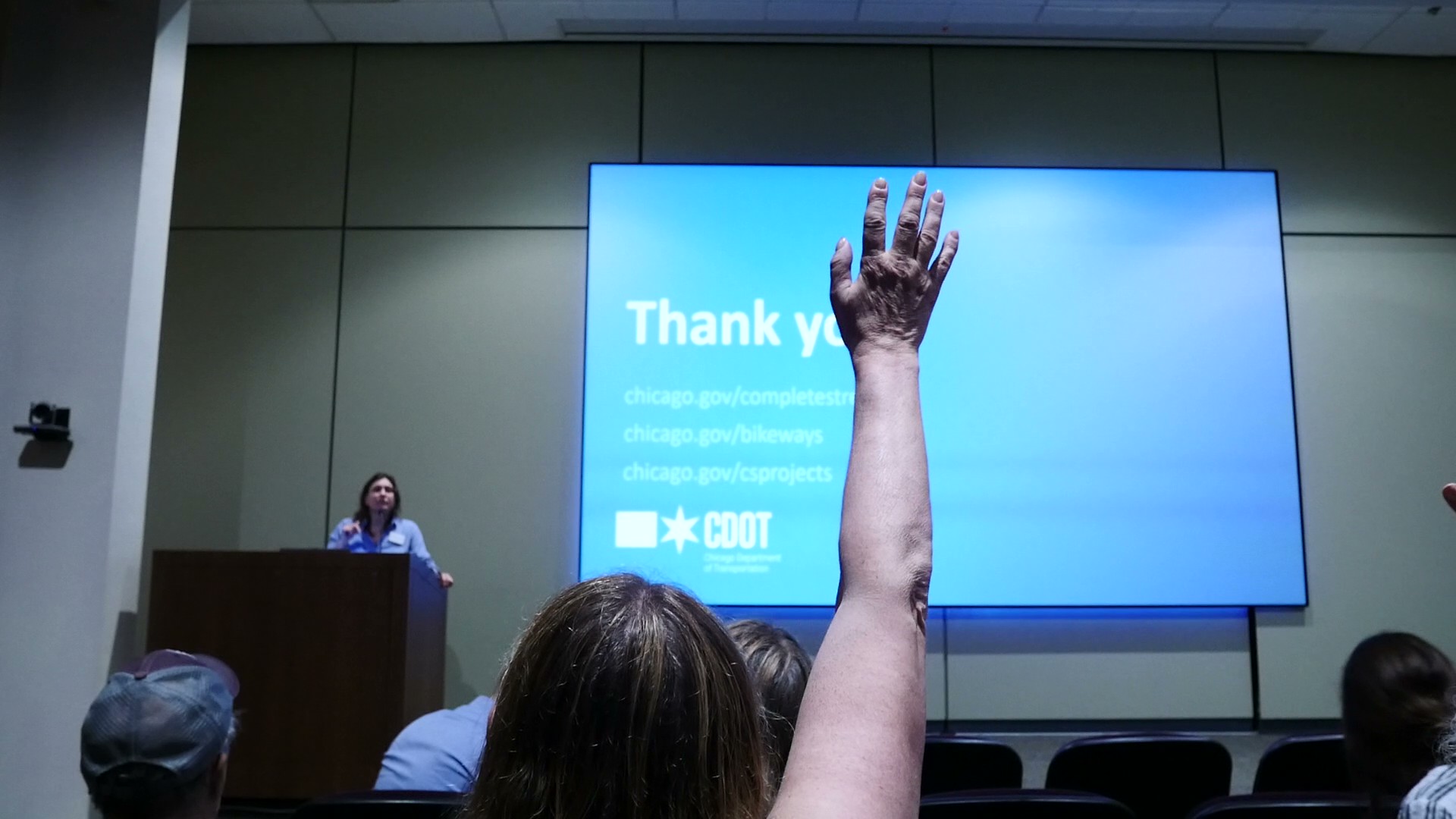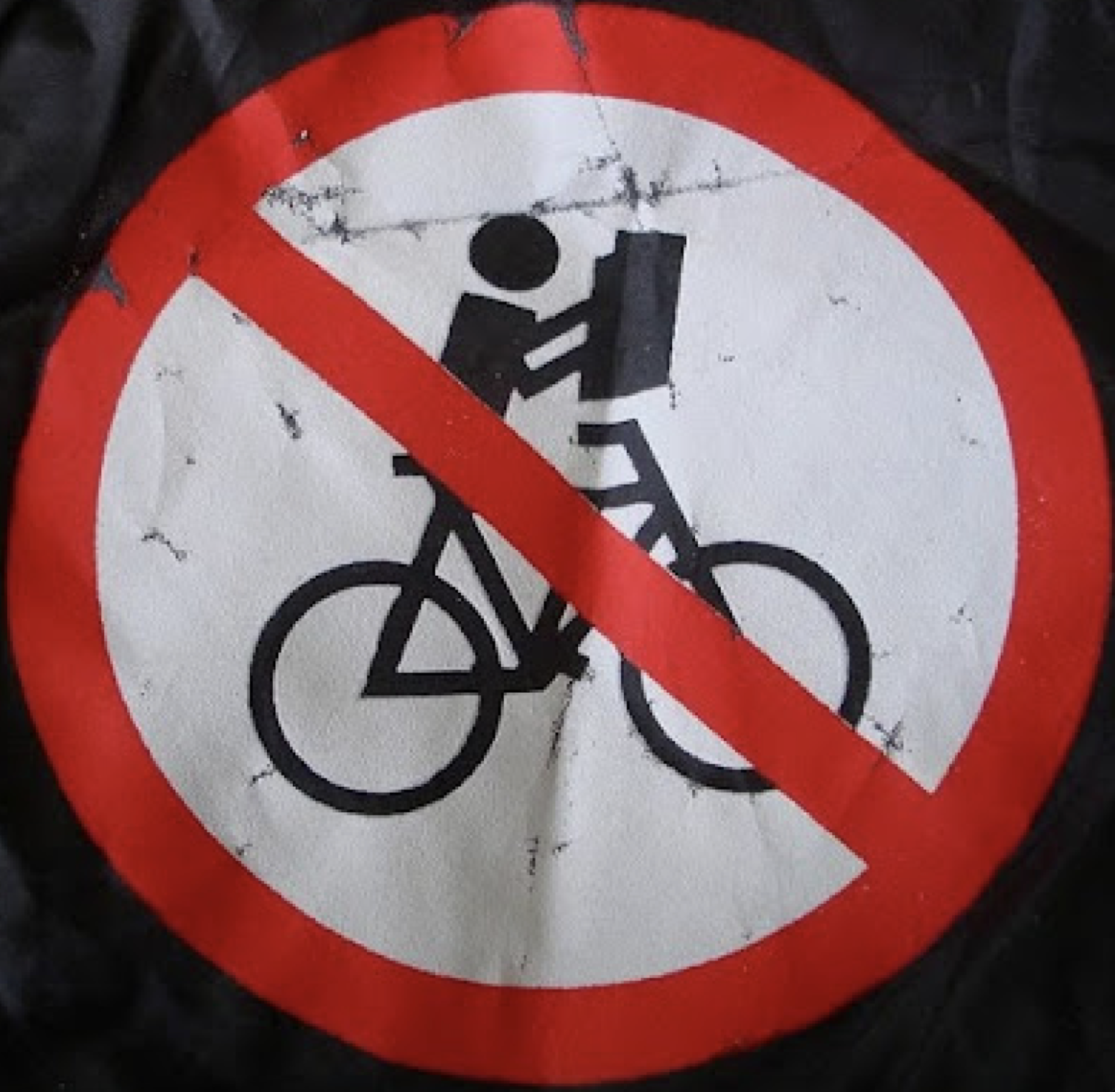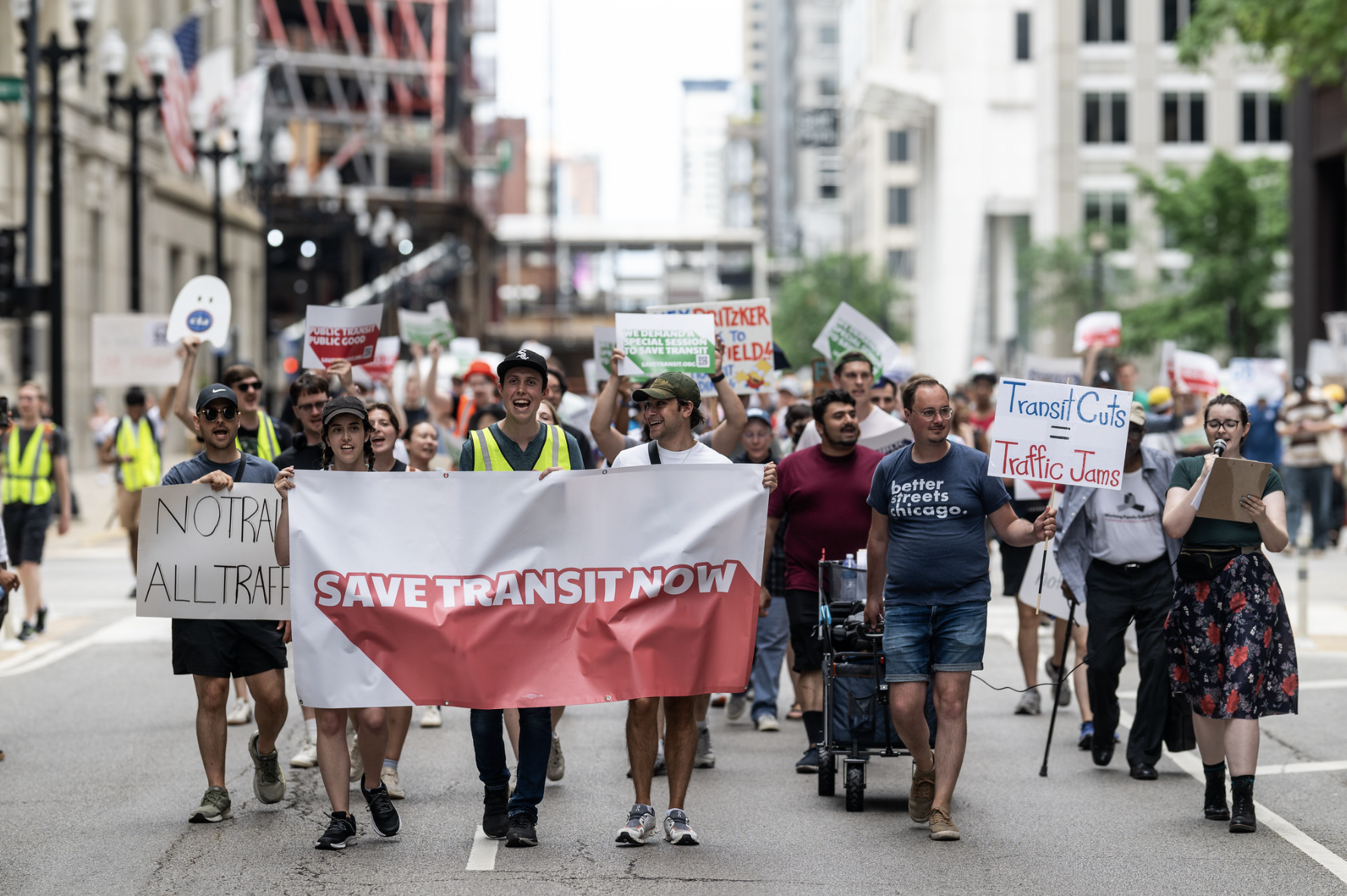Update 4/17/23, 4:00 PM: After the publication of this piece, the CTA provided the following statement:
"Our latest interactive “Meeting the Moment” scorecard shows that service and reliability has continued to improve.
- In March, the CTA delivered 84.8 percent of scheduled service [overall], up slightly from February.
- March saw the highest percentage of scheduled Blue Line service (81.2 percent) delivered since launching “Meeting the Moment.”
- Additionally, instances of double and triple headways (longer wait times) have dropped across all lines
- Also, a recent analysis of the average [Blue Line] headways (wait time between trains) during the AM and PM rush hours showed the following:
- AM rush—average headway: 7:10
- PM rush--average headway: 8:06

In regard to recent Blue Line service:
- In March, the CTA added additional weekday “short-turned” trips throughout the day on the Blue Line between the O’Hare and UIC-Halsted stations—this puts more trains on the busiest section of the line.
- CTA has taken several steps recently to improve service reliability and provide customers with better information regarding their commute on the Blue Line O’Hare branch to reduce platform crowding.
- While these efforts have led to improvements, CTA recognizes more needs to be done, including strengthening its workforce. The unprecedented, industrywide workforce shortages have hampered CTA’s ability to provide all its scheduled service.
Please note that weekend project work is still ongoing between Addison and Western on the O’Hare branch (more info here), which can occasionally impact the number of trips.
We can’t verify any outside analysis [by Commuters Take Action], but instead we offer comprehensive performance metrics on the interactive Meeting the Moment scorecard: https://www.transitchicago.com/meetingthemoment/scorecard/
We update these metric monthly, to allow the public to track our progress."
It's important to note that when the CTA talks about improving percentage of scheduled service delivered numbers for the Blue Line, that's mostly due to cuts in scheduled service. So while waits between trains are getting somewhat more predictable, they're generally not getting any shorter.
Of all the CTA 'L' and bus routes, the Blue Line has probably seen the most rider complaints during the COVID recovery era. While 2022 systemwide ridership was only about 54 percent of 2019 levels, Blue Line use has remained relatively strong, particularly along the O'Hare branch, thanks in part to many transit-oriented developments built in recent years in River West, Wicker Park, and Logan Square. But due to staffing challenges, the agency is running far fewer trains nowadays compared to the Before Times, and customers are having to deal with long, unpredictable waits and crowded platforms and railcars, especially during the AM rush.
Yesterday, the CTA L lines ran:
— Commuters Take Action (@ctaaction) April 17, 2023
51% Blue
83% Brown
94% Green
95% Orange
96% Pink
75% Purple
86% Red
65% Yellow
... of scheduled trains. Riders deserve more accurate schedules.
CTAction added that, despite the deep schedule cuts, the Blue Line's percentage of scheduled service delivered numbers still aren't great. "Between March 27th and April 14th, the Blue Line has only run the full scheduled 10 [8 a.m. to 9 a.m. weekday] trains only six out of 15 weekdays."
The group reported that train bunching is also problem during that time. "Despite scheduling trains every six minutes, waits of 15 minutes or more during rush hour aren’t uncommon."
CTAction noted that not all Blue Line commuters have the latitude to adjust their schedules to avoid crowding. Moreover, the group noted, "Reliable transit options are especially important now given the extensive Kennedy Expressway construction."
"While CTAction appreciates the CTA’s gesture, it doesn’t help to solve anything at all," the post added. "If nothing else, these cameras enable anyone to stalk and track the public, posing a safety threat."
In response to earlier comments from riders that the livestream raises privacy and personal security concerns, a CTA spokesperson previously noted that there's a statement on the webpage: "Real-time platform cameras provide live views only and do not record any footage." The spokesperson told Streetsblog, "The livestream feed was set up with a low resolution, making it challenging to discern identifying features of riders. The video quality is enough to provide a sense of platform crowding—which is its intended purpose. Also, CTA is a public space, and many public spaces across the country have cameras that offer livestreaming."
"Riders on platforms echo the message shown by CTAction: Run more trains," the advocacy group concluded. "Only more frequent and reliable service can make the Blue Line into the kind of rapid transit that the city can be proud of once again."
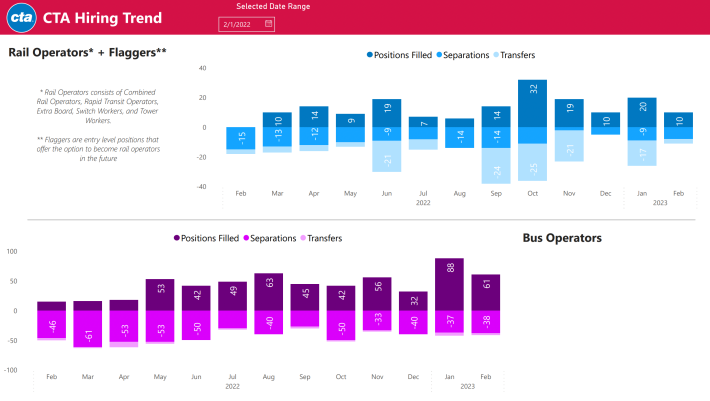
Unfortunately, the CTA won't be able to run significantly more trains systemwide until staffing is closer to full strength again. Data the agency released last week shows that it is struggling to hire enough workers to make much progress when employee attrition is factored in. In a new WBEZ article, anonymous CTA employees cite concerns about crime (a transit worker was beaten on the Green Line Sunday morning) and inflexible scheduling as major reasons why employees quit. Clearly if the CTA is going to get service back to pre-pandemic levels, these and other issues that are making workers resign and retire need to be addressed.
The CTA didn't immediately respond to a request for comment on Commuters Take Action's action and statement.
